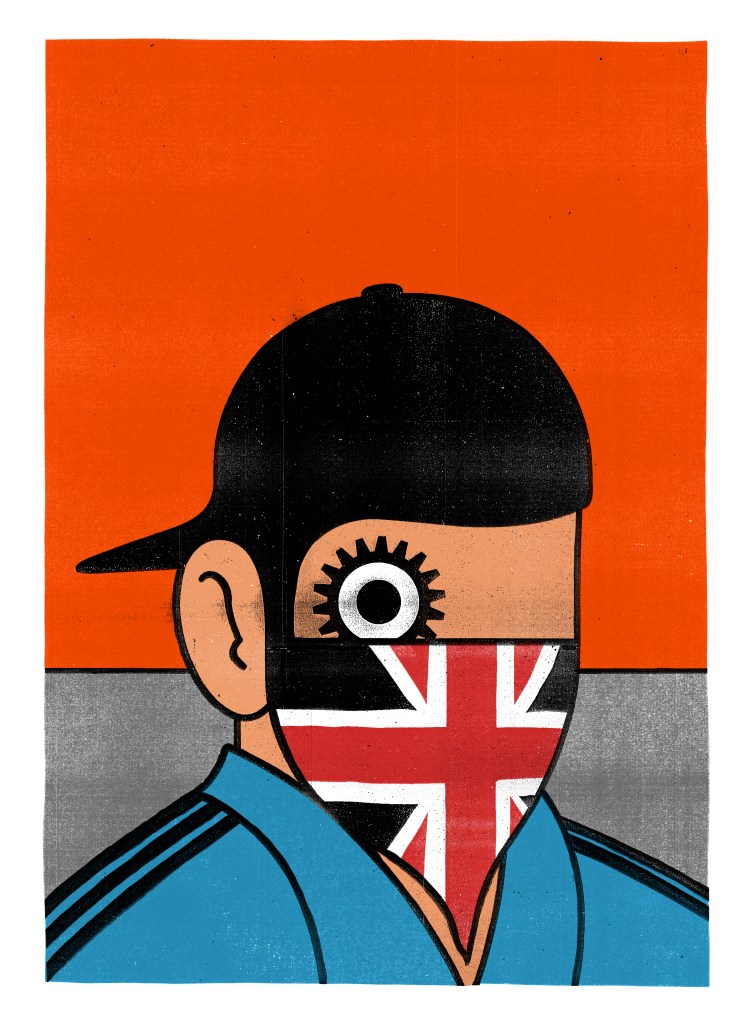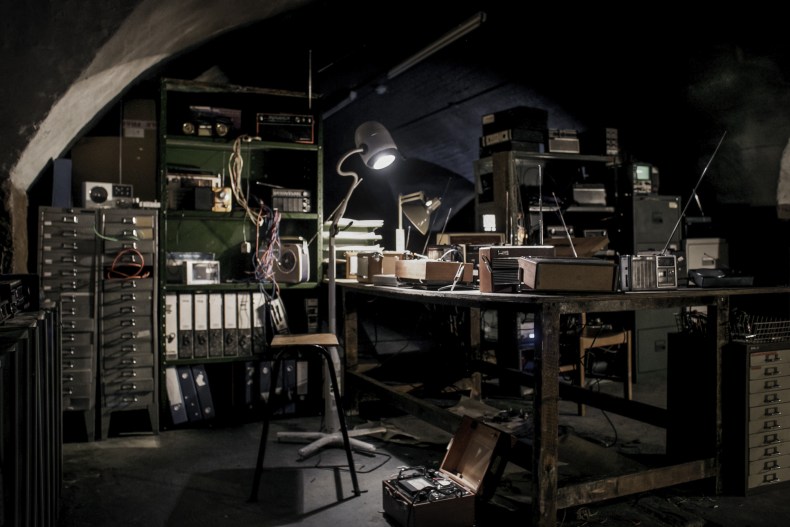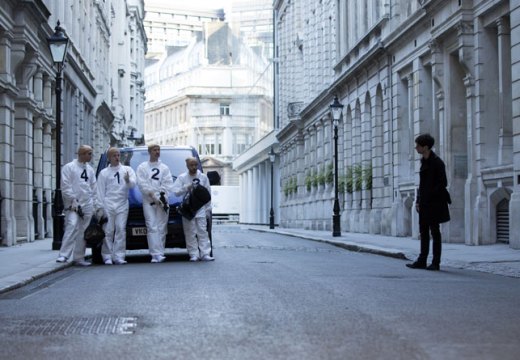Stanley Kubrick was famously fastidious. In the director’s archive at the University of the Arts London is a letter he wrote to projectionists in 1975 requesting that screenings of the recently released Barry Lyndon respect the ‘infinite amount of care’ that was taken over every aspect of the film – the photography, the sets, the costumes, the colour grading and the soundtrack. Such attention to detail makes the curatorial approach evident in the exhibition ‘Daydreaming with Stanley Kubrick’ highly perplexing. A show devoted to the impact of ‘the master film-maker’, a figure known for his meticulous methods and immaculate compositions, too often feels noisy, chaotic and clumsy. The result is less akin to the meditative state of daydreaming and more like a nightmarish summer blockbuster: overblown, overhyped, and dominated by special effects.
Curated by James Lavelle and James Putnam, the exhibition brings together an impressive (if overwhelmingly male) group of over 50 artists whose works engage to varying degrees with Kubrick’s films. There’s a particular emphasis on 2001: A Space Odyssey (1968), A Clockwork Orange (1971) and The Shining (1980), but very few works explore the likes of Spartacus (1960) and Lolita (1962), let alone The Killing (1956) or Paths of Glory (1957). As a result, Kubrick’s career is frequently reduced, to merely its most recognisable images: the monolith, the labyrinth, a black bowler hat… What’s more, the curators seem determined to transform the neoclassical spaces of Somerset House into a wacky warehouse for the summer holidays, as if rows of mirrors and patterned floors say anything interesting about how contemporary artists might extend, challenge, or reconfigure Kubrick’s concerns.

A Clockwork Britain, Paul Britain. © Paul Britain
The treatment of moving-image works is especially frustrating. Julian Rosefeldt’s Suprematism/Manifesto (2015), one section of the German artist’s ambitious 13-channel Manifesto project, appears here on a single small screen in a corridor, its voiceover drowned out by the soundtracks of nearby rooms. Anywhere Out Of This World (2016), an evocative short film, written by Samantha Morton and directed by Douglas Hart, about a young girl entranced by Kubrick’s imagery, is relegated to a tiny broom cupboard. By contrast, Toby Dye’s The Corridor (2016), which assembles a range of Kubrick’s characters across four screens of looping, thrilling madness, thrives thanks to its superior screening conditions.
Even better is Requiem for 114 Radios (2016) by Iain Forsyth and Jane Pollard, a creepy, clever room that plays on the symbols and codes that often obsess Kubrick’s fans, convinced that his films were a channel for secret messages or markers of elaborate political deceptions (see the hilarious documentary Room 237 for more ‘evidence’ of this). Forsyth and Pollard have arranged dozens of different analogue radios each broadcasting an individual voice performing the Requiem Mass employed by Kubrick in both A Clockwork Orange and The Shining. Amid the buzzing static and haunting harmonies, the breathy, bewitching vocals of Beth Orton and the conspiratorial whisper of Jarvis Cocker are clearly audible. The radios are scattered among desks, filing cabinets, folders and noticeboards that evoke the Cold War – a nod to Dr Strangelove (1964), no doubt – while the installation also recalls the media constructions of Nam June Paik and Cildo Meireles’s Babel (2001), a tower of blaring radios currently on display at Tate Modern.

Requiem for 114 Radios, (2016), Iain Forsyth and Jane Pollard. Photo: Toby Farrow
Elsewhere, unfortunately, the show neglects the care and intelligence that characterises Forsyth and Pollard’s contribution in favour of the cheap thrills of the funfair – a ‘maze’ of mediocre paintings, corridors filled with blinking lights, and discordant soundtracks, even a chamber of horrors thanks to Paul Fryer’s waxwork sculpture of a frozen Kubrick. Within this context, Sarah Lucas’s Priapus (2013) comes as a strange relief. It’s a giant concrete phallus resting on the monolithic form of a crushed Vauxhall – a response, perhaps, not only to Alex and his droogs in A Clockwork Orange, as the exhibition text suggests, but also to the ridiculousness, pomposity and violence of male pride in all its political and cultural forms – what we might call ‘the master film-maker’ syndrome. The irony of the piece should not be lost at the end of this flashy, bloated exhibition.
‘Daydreaming with Stanley Kubrick’ is at Somerset House, London until 24 August 2016.
Unlimited access from just $16 every 3 months
Subscribe to get unlimited and exclusive access to the top art stories, interviews and exhibition reviews.














![Masterpiece [Re]discovery 2022. Photo: Ben Fisher Photography, courtesy of Masterpiece London](http://www.apollo-magazine.com/wp-content/uploads/2022/07/MPL2022_4263.jpg)
Has the Fitzwilliam got its rehang right?